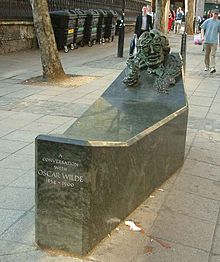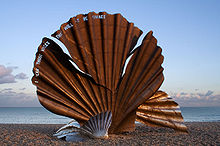
Aldeburgh is a coastal town in the county of Suffolk, England, north of the River Alde. Its estimated population was 2,276 in 2019. It was home to the composer Benjamin Britten and remains the centre of the international Aldeburgh Festival of arts at nearby Snape Maltings, which was founded by Britten in 1948. It also hosts an annual poetry festival and several food festivals and other events.

The Aldeburgh Festival of Music and the Arts is an English arts festival devoted mainly to classical music. It takes place each June in the town of Aldeburgh, Suffolk and is centred on Snape Maltings Concert Hall.

Mary Myfanwy Piper was a British art critic and opera librettist.
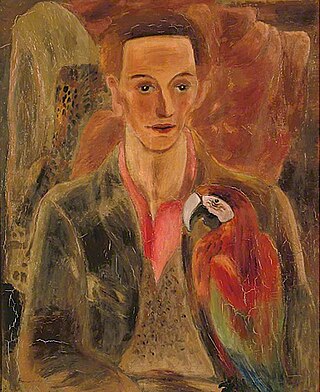
Sir Cedric Lockwood Morris, 9th Baronet was a British artist, art teacher and plantsman. He was born in Swansea in South Wales, but worked mainly in East Anglia. As an artist he is best known for his portraits, flower paintings and landscapes.
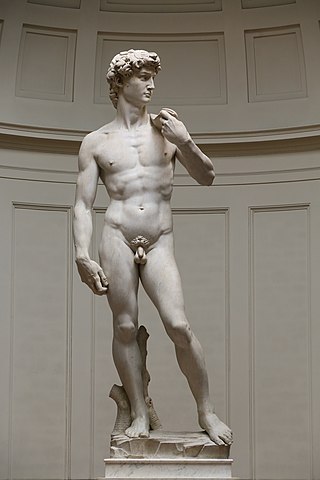
The nude, as a form of visual art that focuses on the unclothed human figure, is an enduring tradition in Western art. It was a preoccupation of Ancient Greek art, and after a semi-dormant period in the Middle Ages returned to a central position with the Renaissance. Unclothed figures often also play a part in other types of art, such as history painting, including allegorical and religious art, portraiture, or the decorative arts. From prehistory to the earliest civilizations, nude female figures were generally understood to be symbols of fertility or well-being.
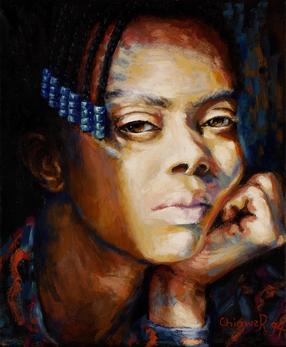
Chinwe Ifeoma Chukwuogo-Roy MBE was a visual artist who was born in Awka (Oka), Anambra state, Nigeria, but spent much of her young life in Ikom on the Cameroon border, before moving back to the family home at Umubele in Awka. She lived in Britain from 1975. Her paintings, prints and sculptures are predominantly figurative, in the genres of portraiture, still-life, landscape and narrative subjects. She won international attention in 2002 for being the first of only two Nigerian artists to have been allowed to paint official portraits of Queen Elizabeth II.

The Women's Art Collection is a permanent collection of modern and contemporary art by women artists, at Murray Edwards College, Cambridge, England.

Vandalism of art is intentional damage of an artwork. The object, usually exhibited in public, becomes damaged as a result of the act, and remains in place right after the act. This may distinguish it from art destruction and iconoclasm, where it may be wholly destroyed and removed, and art theft, or looting.

Henry Thomas Cadbury-Brown RA, also known as H.T. Cadbury-Brown and Jim Cadbury-Brown, was an English architect. He was educated at the Architecture Association where he was influenced by the architecture of Le Corbusier and Walter Gropius. After graduating he worked for architect Ernő Goldfinger and became his lifelong friend. He went on to set up his own successful practice.

Mary Potter, OBE was an English painter whose best-known work uses a restrained palette of subtle colours.

A Conversation with Oscar Wilde is an outdoor sculpture by Maggi Hambling in central London dedicated to Oscar Wilde. Unveiled in 1998, it takes the form of a bench-like green granite sarcophagus, with a bust of Wilde emerging from the upper end, with a hand clasping a cigarette.
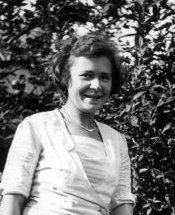
Yvonne Drewry was an English artist and art teacher, noted for her work in and around Suffolk.

Patrick John Tristram Lawrence, 5th Baron Trevethin and 3rd Baron Oaksey, is a British barrister, hereditary peer and crossbench member of the House of Lords. He was educated at Christ Church, Oxford.

The Oscar Wilde Memorial Sculpture is a collection of three statues in Merrion Square in Dublin, Ireland, commemorating Irish poet and playwright Oscar Wilde. The sculptures were unveiled in 1997 and were designed and made by Danny Osborne.

The Haven, Aldeburgh is a 20.2 hectare Local Nature Reserve in Aldeburgh in Suffolk. It is owned by East Suffolk Council and managed by the Suffolk Coast and Heaths Area of Outstanding Natural Beauty. It is in the Leiston - Aldeburgh Site of Special Scientific Interest and Suffolk Coast and Heaths Area of Outstanding Natural Beauty.

Deborah Pritchard is a British composer. She is known for her concert works, a compositional approach informed by her synaesthesia, and her work in response to visual artists, most notably Marc Chagall and Maggi Hambling. She also paints music in the form of visualisations and music maps. The London Symphony Orchestra premiered her large orchestral piece The Angel Standing in the Sun at LSO St Lukes in 2015, her violin concerto Calandra was premiered by Jennifer Pike and the BBC Symphony Orchestra at the Barbican, London in 2022 and Radiance for solo cello, responding to The Peace Window by Marc Chagall at the United Nations, was premiere by Natalie Clein at the Purbeck International Chamber Music Festival in 2022. She won a British Composer Award for her solo violin piece Inside Colour in 2017,
Jonathan Alistair James Reekie is a British arts administrator who has been the Director of Somerset House Trust since 2014. During this time, the renovation of the historic site has been completed, including the launch of Somerset House Studios, helping to establish Somerset House as "London's Working Arts Centre", home to a creative community in central London. Reekie has overseen the expansion of the cultural programme, including PJ Harvey's Recording in Progress with Artangel, Björk Digital, Big Bang Data, Perfume, and Get Up, Stand Up Now. In 2019, Reekie co-curated with Sarah Cook the exhibition 24/7, a wake-up call to a non-stop world, based on the book by Jonathan Crary.

A Sculpture for Mary Wollstonecraft is a public sculpture commemorating the 18th-century feminist writer and advocate Mary Wollstonecraft in Newington Green, London. A work of the British artist Maggi Hambling, it was unveiled on 10 November 2020.

Scallop is a 2003 work by British artist Maggi Hambling. It is located on Aldeburgh beach, Suffolk, in an Area of Outstanding Natural Beauty and is a tribute to composer Benjamin Britten.

